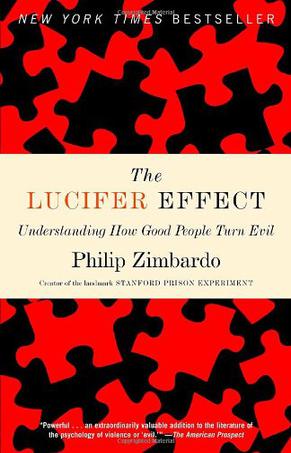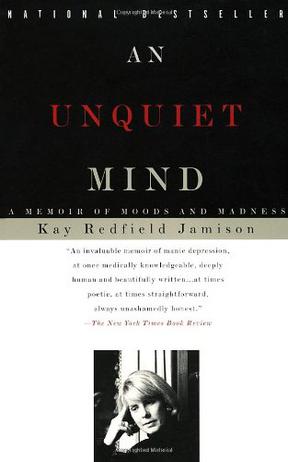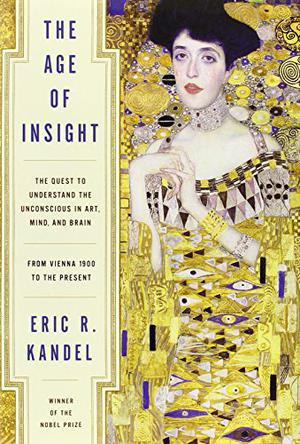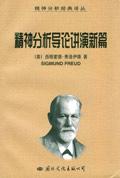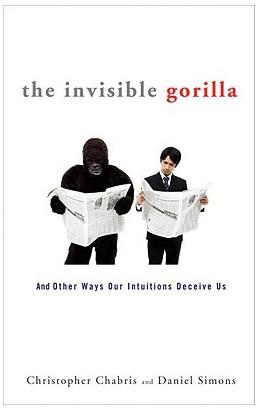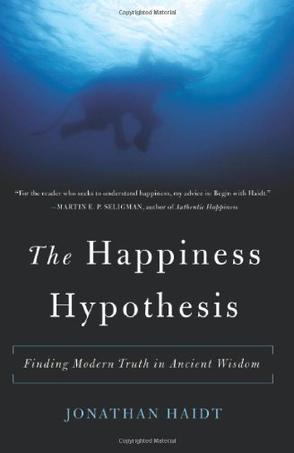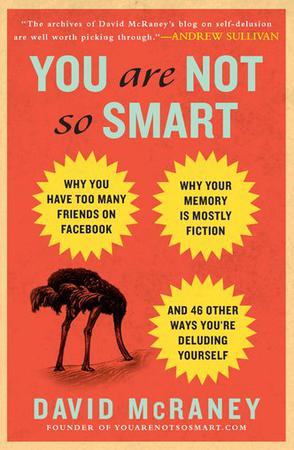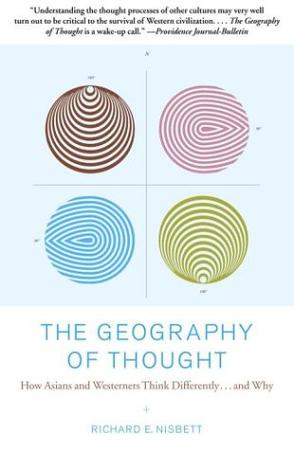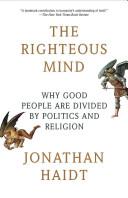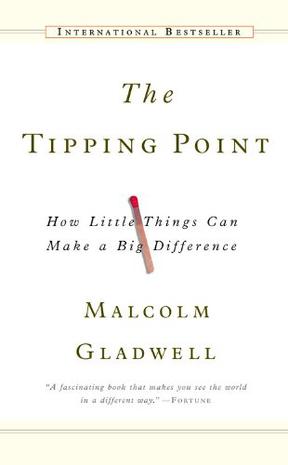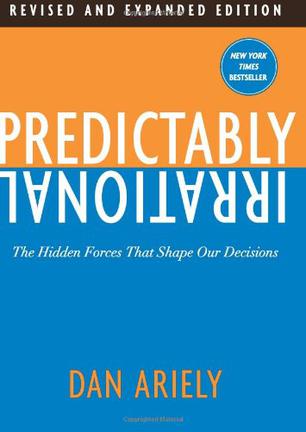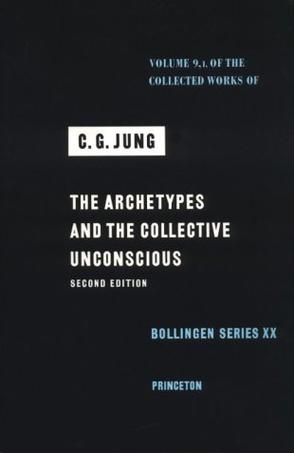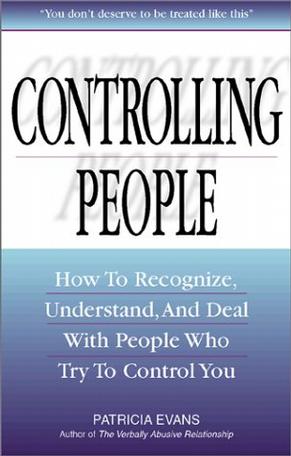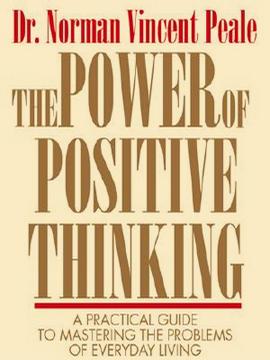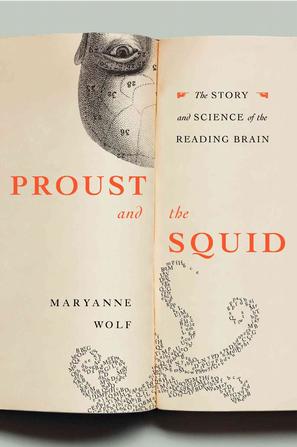欢迎来到相识电子书!
标签:psychology
-
The Lucifer Effect
What makes good people do bad things? How can moral people be seduced to act immorally? Where is the line separating good from evil, and who is in danger of crossing it? Renowned social psychologist Philip Zimbardo has the answers, and in The Lucifer Effect he explains how–and the myriad reasons why–we are all susceptible to the lure of “the dark side.” Drawing on examples from history as well as his own trailblazing research, Zimbardo details how situational forces and group dynamics can work in concert to make monsters out of decent men and women. Zimbardo is perhaps best known as the creator of the Stanford Prison Experiment. Here, for the first time and in detail, he tells the full story of this landmark study, in which a group of college-student volunteers was randomly divided into “guards” and “inmates” and then placed in a mock prison environment. Within a week the study was abandoned, as ordinary college students were transformed into either brutal, sadistic guards or emotionally broken prisoners. By illuminating the psychological causes behind such disturbing metamorphoses, Zimbardo enables us to better understand a variety of harrowing phenomena, from corporate malfeasance to organized genocide to how once upstanding American soldiers came to abuse and torture Iraqi detainees in Abu Ghraib. He replaces the long-held notion of the “bad apple” with that of the “bad barrel”–the idea that the social setting and the system contaminate the individual, rather than the other way around. This is a book that dares to hold a mirror up to mankind, showing us that we might not be who we think we are. While forcing us to reexamine what we are capable of doing when caught up in the crucible of behavioral dynamics, though, Zimbardo also offers hope. We are capable of resisting evil, he argues, and can even teach ourselves to act heroically. Like Hannah Arendt’s Eichmann in Jerusalem and Steven Pinker’s The Blank Slate, The Lucifer Effect is a shocking, engrossing study that will change the way we view human behavior. From the Hardcover edition. -
Escape from Freedom
If humanity cannot live with the dangers and responsibilities inherent in freedom, it will probably turn to authoritarianism. This is the central idea of Escape from Freedom, a landmark work by one of the most distinguished thinkers of our time, and a book that is as timely now as when first published in 1941. Few books have thrown such light upon the forces that shape modern society or penetrated so deeply into the causes of authoritarian systems. If the rise of democracy set some people free, at the same time it gave birth to a society in which the individual feels alienated and dehumanized. Using the insights of psychoanalysis as probing agents, Fromm’s work analyzes the illness of contemporary civilization as witnessed by its willingness to submit to totalitarian rule. -
An Unquiet Mind
The personal memoir of a manic depressive and an authority on the subject describes the onset of the illness during her teenage years and her determined journey through the realm of available treatments. Reprint. 125,000 first printing. NYT. -
The Age of Insight
A brilliant book by Nobel Prize winner Eric R. Kandel, The Age of Insight takes us to Vienna 1900, where leaders in science, medicine, and art began a revolution that changed forever how we think about the human mind—our conscious and unconscious thoughts and emotions—and how mind and brain relate to art. At the turn of the century, Vienna was the cultural capital of Europe. Artists and scientists met in glittering salons, where they freely exchanged ideas that led to revolutionary breakthroughs in psychology, brain science, literature, and art. Kandel takes us into the world of Vienna to trace, in rich and rewarding detail, the ideas and advances made then, and their enduring influence today. The Vienna School of Medicine led the way with its realization that truth lies hidden beneath the surface. That principle infused Viennese culture and strongly influenced the other pioneers of Vienna 1900. Sigmund Freud shocked the world with his insights into how our everyday unconscious aggressive and erotic desires are repressed and disguised in symbols, dreams, and behavior. Arthur Schnitzler revealed women’s unconscious sexuality in his novels through his innovative use of the interior monologue. Gustav Klimt, Oscar Kokoschka, and Egon Schiele created startlingly evocative and honest portraits that expressed unconscious lust, desire, anxiety, and the fear of death. Kandel tells the story of how these pioneers—Freud, Schnitzler, Klimt, Kokoschka, and Schiele—inspired by the Vienna School of Medicine, in turn influenced the founders of the Vienna School of Art History to ask pivotal questions such as What does the viewer bring to a work of art? How does the beholder respond to it? These questions prompted new and ongoing discoveries in psychology and brain biology, leading to revelations about how we see and perceive, how we think and feel, and how we respond to and create works of art. Kandel, one of the leading scientific thinkers of our time, places these five innovators in the context of today’s cutting-edge science and gives us a new understanding of the modernist art of Klimt, Kokoschka, and Schiele, as well as the school of thought of Freud and Schnitzler. Reinvigorating the intellectual enquiry that began in Vienna 1900, The Age of Insight is a wonderfully written, superbly researched, and beautifully illustrated book that also provides a foundation for future work in neuroscience and the humanities. It is an extraordinary book from an international leader in neuroscience and intellectual history. -
精神分析导论讲演新篇
精神分析学说是奥地利精神医生、心理学家弗洛伊德在20世纪创建的,其研究的对象主要是歇斯底里症患者,他发现歇斯底里的病原主要不是生理的因素,而是在于深刻的内在心里因素。他将这种内在的心理因素归结为“无意识性本能学”。所以将他的发现加以总结,形成了一种全新的、最浮创建的心理学说,宾能够将这一学说推广到哲学、宗教、文化领域。从而形成了庞大的思想体系。 本书共两部分内容:第一部分精神分析导论讲演新篇包括七讲内容;第二部分精神分析纲要包括精神及其活动和实践任务两章内容。 -
The Invisible Gorilla
Product Description Reading this book will make you less sure of yourself—and that’s a good thing. In The Invisible Gorilla, Christopher Chabris and Daniel Simons, creators of one of psychology’s most famous experiments, use remarkable stories and counterintuitive scientific findings to demonstrate an important truth: Our minds don’t work the way we think they do. We think we see ourselves and the world as they really are, but we’re actually missing a whole lot. Chabris and Simons combine the work of other researchers with their own findings on attention, perception, memory, and reasoning to reveal how faulty intuitions often get us into trouble. In the process, they explain: • Why a company would spend billions to launch a product that its own analysts know will fail • How a police officer could run right past a brutal assault without seeing it • Why award-winning movies are full of editing mistakes • What criminals have in common with chess masters • Why measles and other childhood diseases are making a comeback • Why money managers could learn a lot from weather forecasters Again and again, we think we experience and understand the world as it is, but our thoughts are beset by everyday illusions. We write traffic laws and build criminal cases on the assumption that people will notice when something unusual happens right in front of them. We’re sure we know where we were on 9/11, falsely believing that vivid memories are seared into our minds with perfect fidelity. And as a society, we spend billions on devices to train our brains because we’re continually tempted by the lure of quick fixes and effortless self-improvement. The Invisible Gorilla reveals the myriad ways that our intuitions can deceive us, but it’s much more than a catalog of human failings. Chabris and Simons explain why we succumb to these everyday illusions and what we can do to inoculate ourselves against their effects. Ultimately, the book provides a kind of x-ray vision into our own minds, making it possible to pierce the veil of illusions that clouds our thoughts and to think clearly for perhaps the first time. -
文明及其不满
《文明及其不满》英语规范、标准,行文流畅,适合文理各科大学生、研究生及广大英语自学者学习之用。“大学生英语文库”是一套面向中国大学生的英语系列读物,各本均为注释性读本,有助于通过研读文化经典,提高人文素养。《文明及其不满》是奥地利著名精神病学家、精神分析学派心理学创始人弗洛伊德晚年的作品之一。于1929年首次出版。作者在书中指出,人的本性是攻击性,以自我为中心,不断追求本能欲望的满足,而社会的发展则要求对个体的这种本能加以约束和控制。因而文明正是在个体对自由的追求和社会对遵从的要求这一永恒的对立和冲突中得以由低级向高级不断演进。 -
The Happiness Hypothesis
http://finance.sina.com.cn/xiaofei/consume/20060817/18052832122.shtml 你觉得下面两个人谁更幸福呢:一个是鲍勃(Bob),他是白种人,是个35岁的单身知识分子,喜好运动、英俊,住在阳光明媚的加利福尼亚,拿着10万美元的薪水,他在业余时间读书,或者去博物馆;另外一个是玛丽(Mary),65岁,她喜好交际,是个超重的普通黑人,要依靠透析。玛丽把她大部分的空余时间花在教堂活动中,与她的丈夫生活在纽约州多雪地带,全家收入为4万美元。 1. 婚姻和牢固的社会关系更为重要 在我开始阅读一些所谓的“幸福研究”方面的新书之前,我可能已经打赌鲍勃更幸福。但是,根据弗吉尼亚大学(University of Virginia)心理学家乔纳森•海德特(Jonathan Haidt)的研究,我可能错了。海德特将鲍勃和玛丽的案例写进了他的著作《幸福假设》(The Happiness Hypothesis)。海德特表示,在他的有关幸福的研究中,最重要的发现之一,就是在环境和人口结构层面的优势——诸如鲍勃的健康、财富、年轻和阳光——并非我们想象得那么重要。婚姻和牢固的人际关系更为重要。因此,玛丽有可能比鲍勃更幸福。 -
You Are Not So Smart
An entertaining illumination of the stupid beliefs that make us feel wise. You believe you are a rational, logical being who sees the world as it really is, but journalist David McRaney is here to tell you that you're as deluded as the rest of us. But that's OK- delusions keep us sane. You Are Not So Smart is a celebration of self-delusion. It's like a psychology class, with all the boring parts taken out, and with no homework. Based on the popular blog of the same name, You Are Not So Smart collects more than 46 of the lies we tell ourselves everyday, including: Dunbar's Number - Humans evolved to live in bands of roughly 150 individuals, the brain cannot handle more than that number. If you have more than 150 Facebook friends, they are surely not all real friends. Hindsight bias - When we learn something new, we reassure ourselves that we knew it all along. Confirmation bias - Our brains resist new ideas, instead paying attention only to findings that reinforce our preconceived notions. Brand loyalty - We reach for the same brand not because we trust its quality but because we want to reassure ourselves that we made a smart choice the last time we bought it. -
The Geography of Thought
From Publishers Weekly This book may mark the beginning of a new front in the science wars. Nisbett, an eminent psychologist and co-author of a seminal Psychological Review paper on how people talk about their decision making, reports on some of his latest work in cultural psychology. He contends that "[h]uman cognition is not everywhere the same"-that those brought up in Western and East Asian cultures think differently from one another in scientifically measurable ways. Such a contention pits his work squarely against evolutionary psychology (as articulated by Steven Pinker and others) and cognitive science, which assume all appreciable human characteristics are "hard wired." Initial chapters lay out the traditional differences between Aristotle and Confucius, and the social practices that produced (and have grown out of) these differing "homeostatic approaches" to the world: Westerners tend to inculcate individualism and choice (40 breakfast cereals at the supermarket), while East Asians are oriented toward group relations and obligations ("the tall poppy is cut down" remains a popular Chinese aphorism). Next, Nisbett presents his actual experiments and data, many of which measure reaction times in recalling previously shown objects. They seem to show East Asians (a term Nisbett uses as a catch-all for Chinese, Koreans, Japanese and others) measurably more holistic in their perceptions (taking in whole scenes rather than a few stand-out objects). Westerners, or those brought up in Northern European and Anglo-Saxon-descended cultures, have a "tunnel-vision perceptual style" that focuses much more on identifying what's prominent in certain scenes and remembering it. Writing dispassionately yet with engagement, Nisbett explains the differences as "an inevitable consequence of using different tools to understand the world." If his explanation turns out to be generally accepted, it means a big victory for memes in their struggle with genes. From Scientific American Nisbett, a psychologist and Distinguished University Professor at the University of Michigan at Ann Arbor, used to believe that "all human groups perceive and reason in the same way." A series of events and studies led him gradually to quite another view, that Asians and Westerners "have maintained very different systems of thought for thousands of years." Different how? "The collective or interdependent nature of Asian society is consistent with Asians' broad, contextual view of the world and their belief that events are highly complex and determined by many factors. The individualistic or independent nature of Western society seems consistent with the Western focus on particular objects in isolation from their context and with Westerners' belief that they can know the rules governing objects and therefore can control the objects' behavior." Nisbett explores areas that manifest these different approaches--among them medicine, law, science, human rights and international relations. Are the societal differences so great that they will lead to conflict? Nisbett thinks not. "I believe the twain shall meet by virtue of each moving in the direction of the other." -
The Righteous Mind
Why can’t our political leaders work together as threats loom and problems mount? Why do people so readily assume the worst about the motives of their fellow citizens? In The Righteous Mind, social psychologist Jonathan Haidt explores the origins of our divisions and points the way forward to mutual understanding. His starting point is moral intuition—the nearly instantaneous perceptions we all have about other people and the things they do. These intuitions feel like self-evident truths, making us righteously certain that those who see things differently are wrong. Haidt shows us how these intuitions differ across cultures, including the cultures of the political left and right. He blends his own research findings with those of anthropologists, historians, and other psychologists to draw a map of the moral domain, and he explains why conservatives can navigate that map more skillfully than can liberals. He then examines the origins of morality, overturning the view that evolution made us fundamentally selfish creatures. But rather than arguing that we are innately altruistic, he makes a more subtle claim—that we are fundamentally groupish. It is our groupishness, he explains, that leads to our greatest joys, our religious divisions, and our political affiliations. In a stunning final chapter on ideology and civility, Haidt shows what each side is right about, and why we need the insights of liberals, conservatives, and libertarians to flourish as a nation. -
Psychology
Psychology is part of everyone's experience: it influences the way we think about everything from education and intelligence, to relationships and emotions, advertising and criminality. People readily behave as amateur psychologists, offering explanations for what people think, feel, and do. But what exactly are psychologists trying to do? What scientific grounding do they have for their approach? This book provides an understanding of some of psychology's leading ideas and their practical relevance, making it a stimulating introduction for anyone interested in understanding the human mind -
Sex, Ecology, Spirituality
This is the first in a projected set of three volumes charting recent thought in the title's interrelated areas, the title itself being a slight misnomer since sex and ecology are the foci of the forthcoming volumes. Here, however, Wilber elaborates at great length several contemporary systematic theories concerned with the biological, psychological, spiritual and metaphysical aspects of life and the various evolutionary stages of each. He then offers an overview of spiritual practices that can lead to an evolved "omega point" of consciousness. Wilber, a transpersonal psychologist and the author of No Boundary, among other works, has unfortunately tried too hard to cram everything possible into this massive undertaking. The result is that even the hundreds of pages of notes (sometimes useful, sometimes merely repetitive) become a mass of ideas and names. Wilber is a well-read, sophisticated and energetic thinker; yet his style veers from the discursively expansive to the overly condensed. Those seeking A Theory of Everything will be more than satisfied. For others, the book's sheer length and lack of organization may make this a very frustrating read -
The Tipping Point
Book Description This celebrated New York Times bestsellernow poised to reach an even wider audience in paperbackis a book that is changing the way North Americans think about selling products and disseminating ideas. Gladwells new afterword to this edition describes how readers can constructively apply the tipping point principle in their own lives and work. Widely hailed as an important work that offers not only a road map to business success but also a profoundly encouraging approach to solving social problems. Amazon.com "The best way to understand the dramatic transformation of unknown books into bestsellers, or the rise of teenage smoking, or the phenomena of word of mouth or any number of the other mysterious changes that mark everyday life," writes Malcolm Gladwell, "is to think of them as epidemics. Ideas and products and messages and behaviors spread just like viruses do." Although anyone familiar with the theory of memetics will recognize this concept, Gladwell's The Tipping Point has quite a few interesting twists on the subject. For example, Paul Revere was able to galvanize the forces of resistance so effectively in part because he was what Gladwell calls a "Connector": he knew just about everybody, particularly the revolutionary leaders in each of the towns that he rode through. But Revere "wasn't just the man with the biggest Rolodex in colonial Boston," he was also a "Maven" who gathered extensive information about the British. He knew what was going on and he knew exactly whom to tell. The phenomenon continues to this day--think of how often you've received information in an e-mail message that had been forwarded at least half a dozen times before reaching you. Gladwell develops these and other concepts (such as the "stickiness" of ideas or the effect of population size on information dispersal) through simple, clear explanations and entertainingly illustrative anecdotes, such as comparing the pedagogical methods of Sesame Street and Blue's Clues, or explaining why it would be even easier to play Six Degrees of Kevin Bacon with the actor Rod Steiger. Although some readers may find the transitional passages between chapters hold their hands a little too tightly, and Gladwell's closing invocation of the possibilities of social engineering sketchy, even chilling, The Tipping Point is one of the most effective books on science for a general audience in ages. It seems inevitable that "tipping point," like "future shock" or "chaos theory," will soon become one of those ideas that everybody knows--or at least knows by name. --Ron Hogan From Publishers Weekly The premise of this facile piece of pop sociology has built-in appeal: little changes can have big effects; when small numbers of people start behaving differently, that behavior can ripple outward until a critical mass or "tipping point" is reached, changing the world. Gladwell's thesis that ideas, products, messages and behaviors "spread just like viruses do" remains a metaphor as he follows the growth of "word-of-mouth epidemics" triggered with the help of three pivotal types. These are Connectors, sociable personalities who bring people together; Mavens, who like to pass along knowledge; and Salesmen, adept at persuading the unenlightened. (Paul Revere, for example, was a Maven and a Connector). Gladwell's applications of his "tipping point" concept to current phenomena--such as the drop in violent crime in New York, the rebirth of Hush Puppies suede shoes as a suburban mall favorite, teenage suicide patterns and the efficiency of small work units--may arouse controversy. For example, many parents may be alarmed at his advice on drugs: since teenagers' experimentation with drugs, including cocaine, seldom leads to hardcore use, he contends, "We have to stop fighting this kind of experimentation. We have to accept it and even embrace it." While it offers a smorgasbord of intriguing snippets summarizing research on topics such as conversational patterns, infants' crib talk, judging other people's character, cheating habits in schoolchildren, memory sharing among families or couples, and the dehumanizing effects of prisons, this volume betrays its roots as a series of articles for the New Yorker, where Gladwell is a staff writer: his trendy material feels bloated and insubstantial in book form. Agent, Tina Bennett of Janklow & Nesbit. Major ad/promo. (Mar.) From Library Journal This genial book by New Yorker contributor Gladwell considers the elements needed to make a particular idea take hold. The "tipping point" (not a new phrase) occurs when something that began small (e.g., a few funky kids in New York's East Village wearing Hush Puppies) turns into something very large indeed (millions of Hush Puppies are sold). It depends on three rules: the Law of the Few, the Stickiness Factor, and the Power of Context. Episodes subjected to this paradigm here include Paul Revere's ride, the creation of the children's TV program Sesame Street, and the influence of subway shooter Bernie Goetz. The book has something of a pieced-together feel (reflecting, perhaps, the author's experience writing shorter pieces) and is definitely not the stuff of deep sociological thought. It is, however, an entertaining read that promises to be well publicized. Recommended for public libraries. -Ellen Gilbert, Rutgers Univ. Lib., New Brunswick, NJ From Booklist Gladwell, a New Yorker staff writer, offers an incisive and piquant theory of social dynamics that is bound to provoke a paradigm shift in our understanding of mass behavioral change. Defining such dramatic turnarounds as the abrupt drop in crime on New York's subways, or the unexpected popularity of a novel, as epidemics, Gladwell searches for catalysts that precipitate the "tipping point," or critical mass, that generates those events. What he finds, after analyzing a number of fascinating psychological studies, is that tipping points are attributable to minor alterations in the environment, such as the eradication of graffiti, and the actions of a surprisingly small number of people, who fit the profiles of personality types that he terms connectors, mavens, and salesmen. As he applies his strikingly counterintuitive hypotheses to everything from the "stickiness," or popularity, of certain children's television shows to the spread of sexually transmitted diseases, Gladwell reveals that our cherished belief in the autonomy of the self is based in great part on wishful thinking. Donna Seaman From AudioFile Why is it that fashion trends change the way we dress? Why do various TV shows, movies, and books become so popular? Malcolm Gladwell provides a diagram of our society, along with an analysis of the strategies people apply to influence and mold its direction. Gladwell describes the personality types that create trends and those that influence others by "spreading the word." History takes on a whole new perspective as he describes events of early America that specifically follow his theories of "selling the public on an idea" and "social epidemics." Feedback from market mavericks further substantiates Gladwell's viewpoints. B.J.P. Book Dimension length: (cm)17.2 width:(cm)10.8 点击链接进入中文版: 引爆点 -
Predictably Irrational, Revised and Expanded Edition
How do we think about money? What caused bankers to lose sight of the economy? What caused individuals to take on mortgages that were not within their means? What irrational forces guided our decisions? And how can we recover from an economic crisis? In this revised and expanded edition of the New York Times and Wall Street Journal bestseller Predictably Irrational, Duke University's behavioral economist Dan Ariely explores the hidden forces that shape our decisions, including some of the causes responsible for the current economic crisis. Bringing a much-needed dose of sophisticated psychological study to the realm of public policy, Ariely offers his own insights into the irrationalities of everyday life, the decisions that led us to the financial meltdown of 2008, and the general ways we get ourselves into trouble. Blending common experiences and clever experiments with groundbreaking analysis, Ariely demonstrates how expectations, emotions, social norms, and other invisible, seemingly illogical forces skew our reasoning abilities. As he explains, our reliance on standard economic theory to design personal, national, and global policies may, in fact, be dangerous. The mistakes that we make as individuals and institutions are not random, and they can aggregate in the market—with devastating results. In light of our current economic crisis, the consequences of these systematic and predictable mistakes have never been clearer. Packed with new studies and thought-provoking responses to readers' questions and comments, this revised and expanded edition of Predictably Irrational will changethe way we interact with the world—from the small decisions we make in our own lives to the individual and collective choices that shape our economy. -
Archetypes and the Collective Unconscious (The Collected Works of C. G. Jung, Vol. 9, Pt. 1)
Essays which state the fundamentals of Jung's psychological system: "On the Psychology of the Unconscious" and "The Relations Between the Ego and the Unconscious," with their original versions in an appendix. -
Controlling People
This timely book not only helps readers free themselves from controlling people but also seeks to explain the occurrence of verbal abuse, battering, stalking, harassment, hate crimes, gang violence, tyranny, terrorism, and territorial invasion. What the author calls a "compelling force" overcomes these controllers; because they sense the overwhelming "psychic pain, distress, and discord permeating the world," they must impose a twisted kind of order on their friends, lovers, and acquaintances. Often people with good intentions end up doing the opposite of what they would need to do to realize a goal or fulfill a need. 352 pages. Softcover. 2002. -
Proust and the Squid
Anyone who reads is bound to wonder, at least occasionally, about how those funny squiggles on a page magically turn into "Bare ruined choirs, where late the sweet birds sang" or "After a while I went out and left the hospital and walked back to the hotel in the rain." Where did this unlikely skill called reading come from? What happens in our brain when our eyes scan a line of type? Why do some of us, or some of our children, find it difficult to process the visual information held in words? In Proust and the Squid, Maryanne Wolf, a professor at Tufts University and director of its Center for Reading and Language Research, offers explanations for all these questions, but with an emphasis that is "more biological and cognitive than cultural-historical." This means that Wolf focuses on the physiological character of the human brain, which holds at its disposal "three ingenious design principles: the capacity to make new connections among older structures; the capacity to form areas of exquisitely precise specialization for recognizing patterns in information, and the ability to learn to recruit and connect information from these areas automatically." These "design principles" provide the neuronal foundation of reading, and Wolf spends half her book explaining the evolution and minutiae of this "reading brain." Nearly all this material makes for very hard slogging, even though Proust and the Squid is confidently described as the author's "first book for the general public." (The catchy but utterly uninformative title, by the way, refers to the novelist's impressionistic thoughts about childhood reading and a scientist's use of the squid brain for neurological research.) A work of popularization needs a light clear style, lots of anecdotes and some plot or story line that moves along at a good clip. At times, Wolf makes a stab at including some human-interest element or personal example, but all too soon she reverts to her normal prose, which is austere, technical and, finally, wearisome: "In a pathbreaking meta-analysis of twenty-five imaging studies of different languages, cognitive scientists from the University of Pittsburgh found three great common regions used differentially across writing systems. In the first, the occipital-temporal area (which includes the hypothesized locus of 'neuronal recycling' for literacy), we become proficient visual specialists in whatever script we read. In the second, the frontal region around Broca's area, we become specialists in two different ways -- for phonemes in words and for their meanings. In the third, the multifunction region spanning the upper temporal lobes and the lower, adjacent parietal lobes, we recruit additional areas that help to process multiple elements of sounds and meanings, which are particularly important for alphabetic and syllabary systems." Out of context such prose sounds perfectly dreadful -- and in context sadly characteristic of the writing in professional journals, no matter what the field. In fact, everything Wolf says makes sense, the specialized terms she uses have been previously defined, and there are line illustrations on a facing page. Nonetheless, such technical onslaughts are extremely tiring to read, and Wolf seldom lets up on the information-rich barrage for very long. At different points she does quote passages from Proust and George Eliot, but even these two great novelists are hardly what you'd call sprightly, and they merely add their own specific gravity to already forbidding pages. In the second half of the book, Wolf examines the reading difficulties generally subsumed under the term dyslexia. We learn that one of her sons suffers from this disability, that there are various forms and theories about its origin and character, that it can sometimes result in a special talent for fields that emphasize pattern and spatial creativity (such as art, design and engineering) and that "programs which systematically and explicitly teach young readers phoneme awareness and grapheme-phoneme correspondence are far more successful in dealing with reading disabilities than other programs." As this last sentence makes evident, no relief awaits the once-eager reader who by this point has begun to wonder if he could be suffering from a sudden case of adult-onset dyslexia. Despite Wolf's failure to write a truly popular book, she clearly does know her stuff, and those professionally involved with the teaching of reading might be more patient than I. In particular, she addresses the special needs of children raised in cultures where standard English isn't the dominant language, and she speculates, with real concern, about the impact of computer culture on the "reading brain." Dyslexia has taught her that humans were never genetically designed to read, and this peculiar technique of sustained mental attention could be reduced, reconfigured or even lost in the rising digital age: "Will unguided information lead to an illusion of knowledge, and thus curtail the more difficult, time-consuming, critical thought processes that lead to knowledge itself? Will the split-second immediacy of information gained from a search engine and the sheer volume of what is available derail the slower, more deliberative processes that deepen our understanding of complex concepts, of another's inner thought processes, and of our own consciousness?" Wolf never fully answers these questions, though they strike me as the basis for a much needed book. Still, like any parent with a child transfixed by flashing screens, she is troubled by what she observes. She urges that we "teach our children to be 'bitextual' " or 'multitextual,' able to read and analyze texts flexibly in different ways" so that our sons and daughters don't end up as mere "decoders of information," distracted from the "deeper development of their intellectual potential." Early on in Proust and the Squid, she had noted that infants and toddlers who aren't told stories by their caregivers, who aren't read to from a very early age, nearly always fail to learn to read well themselves. By implication, it may already be too late for many young people: They will never be able to read with the same thoughtfulness and comprehension as their parents. Think about that.
热门标签
下载排行榜
- 1 梦的解析:最佳译本
- 2 李鸿章全传
- 3 淡定的智慧
- 4 心理操控术
- 5 哈佛口才课
- 6 俗世奇人
- 7 日瓦戈医生
- 8 笑死你的逻辑学
- 9 历史老师没教过的历史
- 10 1分钟和陌生人成为朋友

